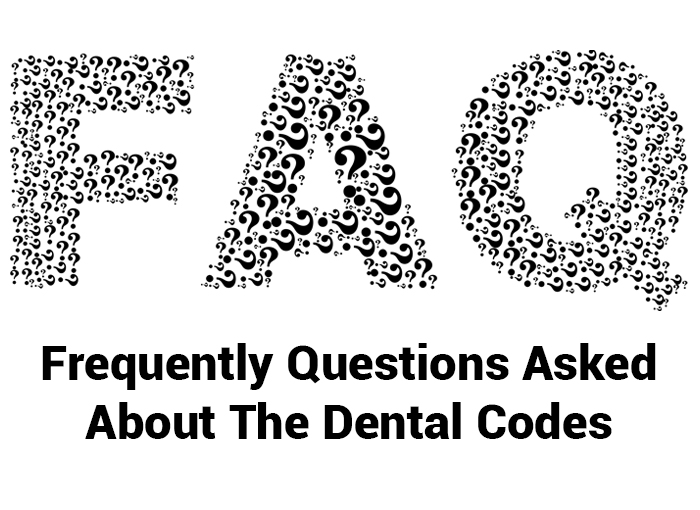
Dental billing is an extensive area with minute details to be kept in check. It requires an understanding of a variety of subjects including, healthcare systems, insurance policies, regulatory protocols, etc. These complexities and ever changing codes & policies make the billing process challenging and leave room for numerous questions. Many people are still not aware of the types of dental codes as well as how they are classified. This is why it is important to look at frequently asked questions about dental codes as well as their answers.
1. Is the CDT Code updated annually, and why?
Yes, the CDT code is updated annually to incorporate the changes suggested by dental experts and authorities. Dental practices are advancing continuously, and the CDT Code helps practitioners to document the services they deliver. These updates enable the CDT Code to support this progression.
2. Who requests CDT Code additions, revisions, or other changes, and lists the steps involved in the process? The dental practitioner deals primarily in and around dental care. Dental care practitioners and experts are a crucial source of making addition and revision requests. In addition to that, ADA's Council on Dental Benefit Programs, dental specialty organizations, third-party payers, and others in the dental community can also make such requests. Any interested party can follow the maintenance process to push a request; the information is posted online at the CDT Code Page (https://www.ada.org/en/publications/cdt). Further, CMC (Code Maintenance Committee) determines the incorporation of requested actions by their vote.
3. How do I know which CDT Code is appropriate to document the service I delivered? A dentist is a sole authority determining the services delivered to a patient. It typically consists of a series of clinical decisions and involved procedures. The CDT Code entry, as published in the manual, is accountable for determining which dental procedure code should be used against the procedure or service delivered. Procedure code entry consists of the code with its nomenclature, while some procedure code entries also have descriptors. A thorough understanding of the code entry is required to equip the practitioner to describe the code that accurately describes the procedures performed. It is important to be precise because otherwise it can lead to claim denials.
4. What if the procedure delivered by a dental professional doesn't have a code assigned? Occasionally, the new or modified dental procedures and the CDT Code maintenance process are not in sync. The annual maintenance cycle is a step-by-step, milestone-based process. Still, there will be situations when, in the dental practitioner's evaluation, no CDT Code entry correctly reports the service provided. In that time, an "unspecified restorative procedure, by report" CDT Code may be considered (e.g., D2999 unspecified restorative procedure, by report). All 'By Report' procedure codes must include the supporting documentation that explains the service provided. Furthermore, it's an opportunity for the dental practitioner to submit a CDT Code request to update the entry.
5. Who is the authority delivering information about the CDT Code or claim submission?
The ADA Member Service Center (MSC) is the primary source of delivering information about the CDT Code. Complex matters, per se, are forwarded to the Center for Dental Benefits and Coding & Quality staff, who are within the Practice Institute. You can contact the MSC via telephone at 312-440-2500 or via email at dentalcode@ada.org.
6. Can CDT Code information and other supporting materials be found online?
There are numerous publications with webinars and guides on most medical procedures and their CDT Codes. You may choose to view the content online or download it; the information is available at no cost
(https://www.ada.org/en/publications/cdt/coding-education). The content includes case management services, teledentistry events, and more.
7. Why is it a good idea to outsource your medical billing?
With continuous changes in the code entries and policies, it is hard for dental professionals to keep up with the system along with his/her practice. However, not being updated with these changes can severely impact the revenue cycle. With an established billing service, practitioners manage to save time and costs. Additionally, it takes away the burden of Medical Credentialing, Patient’s Insurance Verification, Privacy Protection, Productivity, and Denial Management. Companies like Capline Services are entrusted with these responsibilities to manage and provide these services. For more details follow (Link - https://www.caplineservices.com/blog/why-is-it-a-good-idea-to-outsource your-medical-billing)